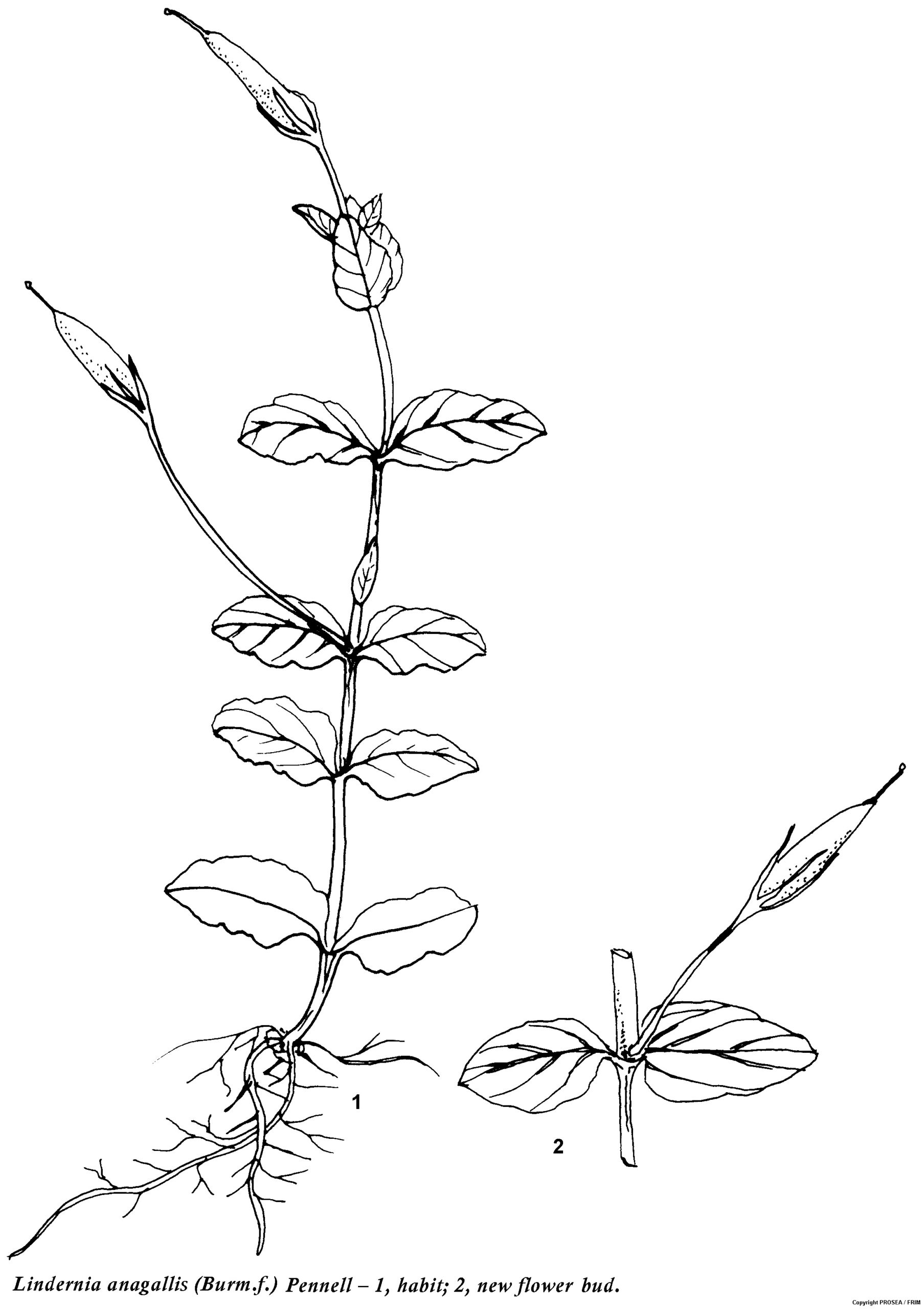Lindernia anagallis (Burm.f.) Pennell
Family
Scrophulariaceae
Synonyms
Ruellia anagallis Burm.f., Vandellia pedunculata Benth., Vandellia cordifolia (Colsm.)G. Don.
Vernacular Names
| Thailand | Nuat plaa duk (Northern), yam chui kai kang (Central). |
| Vietnam | l[uwx] d[awf]ng cong. |
Geographical Distributions
Lindemia anagallis is distributed throughout continental and Southeast Asia and northern Australia.
Description
L. anagallis is an annual herb that can grow up to measure about 40 cm tall and branched from the base. The branches are short, prostrate and erect.
The leaves are oblong-lance-shaped to ovate, with a size measuring about 9-45 mm long, truncate base, shallowly remotely dentate margins and subsessile.
The flowers are axillary, solitary, 1 per leaf pair where the upper ones forms a raceme and with measure 6-15 mm long pedicel. The petal tube is measuring 5-8 mm long. The upper lip is entire while the lower lip is 3-lobed. The petal base is yellowish, pale bluish purple to white lobes in colour and with 4 stamens.
The capsule is ellipsoid in shape, attenuate, with a size measure 1.2 cm long and much extending the sepal.
The seed is ellipsoid, reticulate and acute at both ends.
Ecology / Cultivation
L. anagallis occurs in marshy localities, both in savanna and forests, and along rivers, from sea-level up to 1900 m altitude. It is a weed in irrigated and rainfed rice fields.
Line Drawing / Photograph
References
- Plant Resources of South-East Asia No. 12 (2): Medicinal and poisonous plants.


